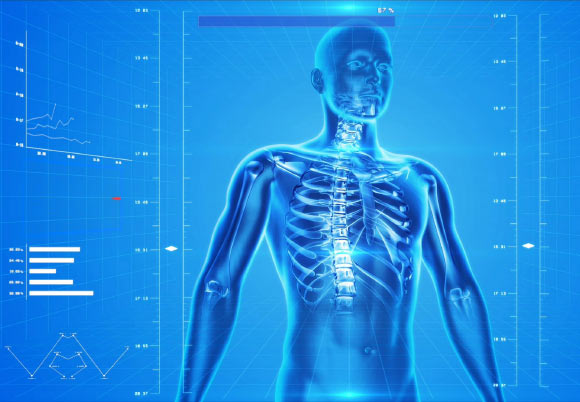A bone-derived hormone called osteocalcin is known to affect how we metabolize sugar and fat. In a new study, Professor Mathieu Ferron of the Université de Montréal and the Montreal Clinical Research Institute and co-authors have investigated how osteocalcin works. The results may open the door to new ways of preventing type 2 diabetes and obesity.
“One of osteocalcin’s functions is to increase insulin production, which in turn reduces blood glucose levels. It can also protect us from obesity by increasing energy expenditure,” Professor Ferron said.
“Studies have shown that, for some people, changes in blood concentrations of osteocalcin may even stave off the development of diabetes.”
“These protective properties sparked our interest in how this hormone actually works.”
According to the scientists, osteocalcin is produced by osteoblasts, the same cells responsible for making our bones.
The hormone builds up in bone, and then, through a series of chemical reactions, is released into the blood. Professor Ferron and colleagues are focusing on this key step.
“When it is first produced in osteoblasts, osteocalcin is in an inactive form,” Professor Ferron noted.
“What interested us was understanding how osteocalcin becomes active so as to be able to play its role when released into the blood.”
The researchers demonstrated that an enzyme, which acts like molecular scissors, is required.
Inactive osteocalcin has one more piece than active osteocalcin.
The authors examined in mice the different enzymes present in cells where osteocalcin was produced that could be responsible for snipping off the piece in question. And they succeeded in identifying it: it’s called furin.
“Furin causes osteocalcin to become active and the hormone is then released into the blood,” Professor Ferron said.
“We demonstrated that when there was no furin in bone cells, inactive osteocalcin built up and was still released, but this led to an increase in blood glucose levels and a reduction in energy expenditure and insulin production.”
Deleting these ‘scissors’ also had an unexpected effect: it reduced the mice’s appetite.
“We’re confident that the absence of furin was the cause,” Professor Ferron said.
“Our results suggest the existence of a new bone hormone that controls food intake. In future work, we hope to determine whether furin interacts with another protein involved in appetite regulation.”
The study is published in the Journal of Clinical Investigation.
_____
Omar Al Rifai et al. 2017. Proprotein convertase furin regulates osteocalcin and bone endocrine function. J Clin Invest 127 (11): 4104-4117; doi: 10.1172/JCI93437








